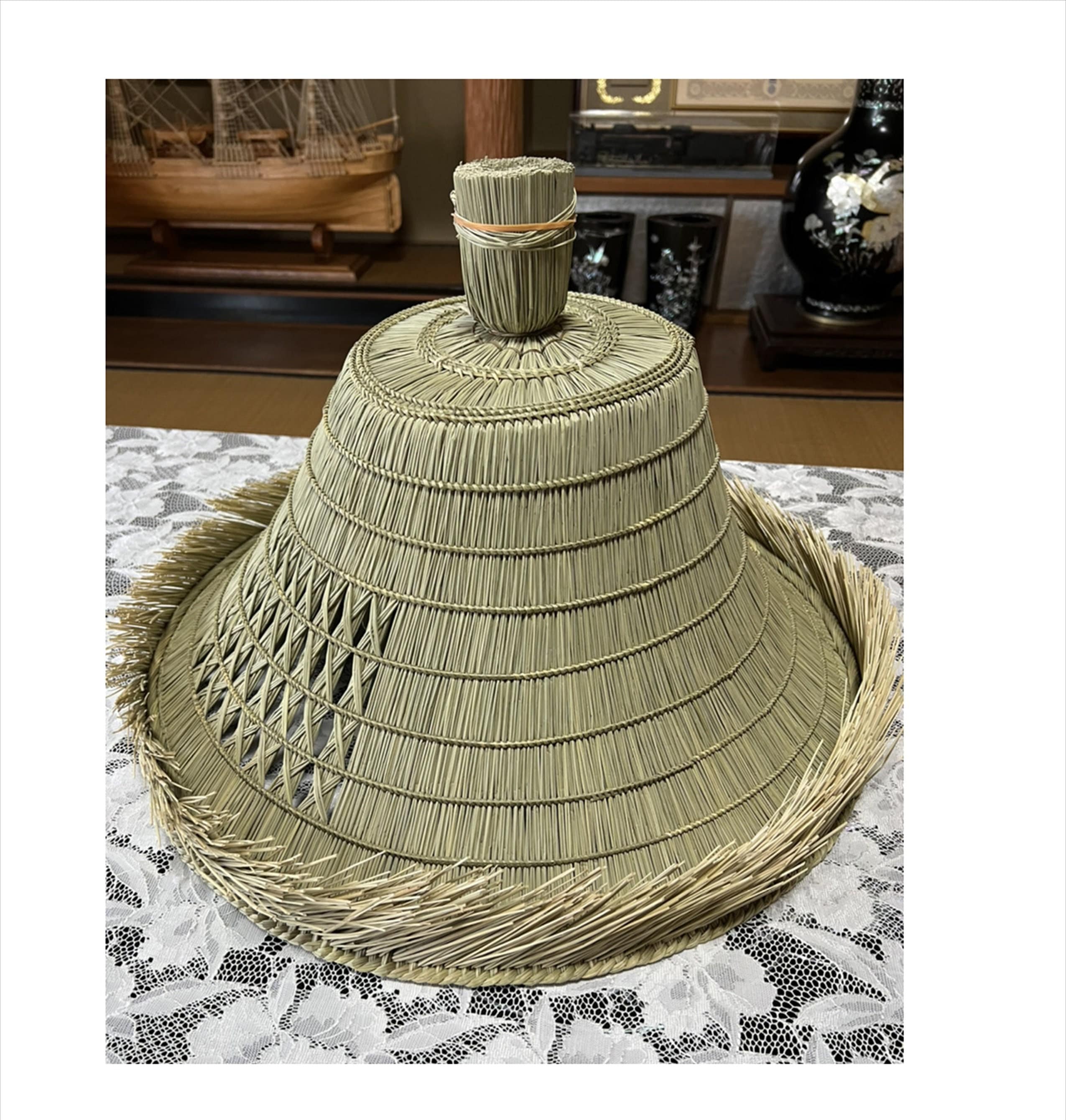
Japanese Samurai Hat Roningasa Edo Style Hand Made Japan Etsy Australia
The Kamakura shogunate was overthrown in 1333 and succeeded by the Ashikaga shogunate (1338-1573), based in Muromachi, near Kyoto. Under the Ashikaga, samurai were increasingly organized into lord-vassal hierarchies. Claiming loyalty to one lord, they adhered to a value system that promoted the virtues of honor, loyalty, and courage.

Pin on Culture
The Samurai (also bushi) were a class of warriors that arose in the 10th century in Japan and which performed military service until the 19th century. Elite and highly-trained soldiers adept at using both the bow and sword, the samurai were an essential component of Japanese armies in the medieval period.
What is a samurai hat called? Quora
The hikitate-eboshi is a type of nae-eboshi that was adopted by the warrior class as they rose to power.Much like the tate-eboshi, it is a tall hat, and it often stands up and away from the head.However, unlike the former, it is only lightly lacquered, so it remains pliable, and does not make use of the uya.It was favored by warriors as it could be worn, even underneath a kabuto, though as.
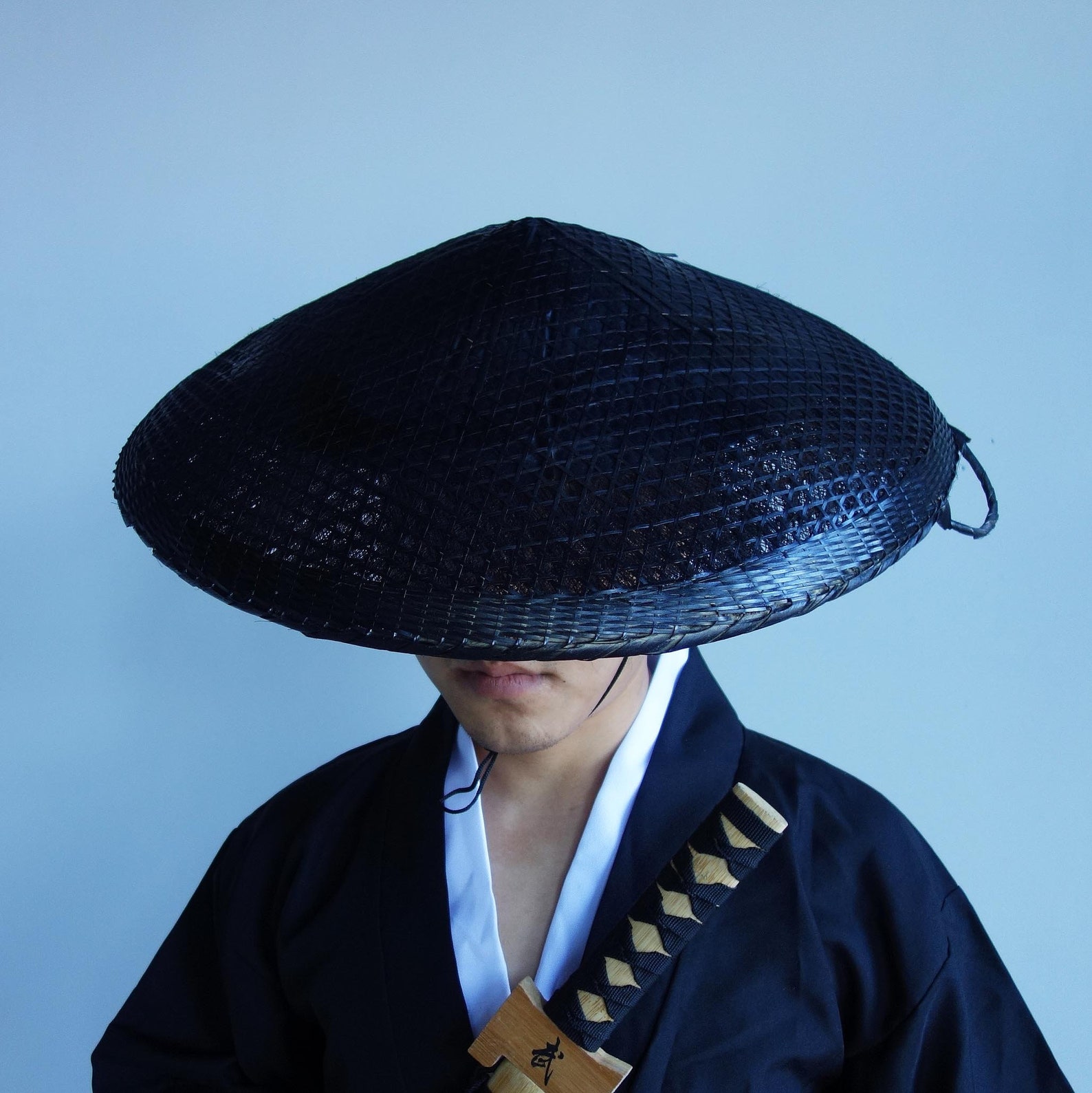
Bamboo Japanese Hat Samurai Hat Cosplay Asian Hat Cone Dia. Etsy New Zealand
This Japanese helmet (kabuto) and accompanying half-mask (mempo) form part of the elaborate suits of armor worn by the samurai (military nobility akin to the knights of Europe) of feudal Japan.The kabuto has laced, lacquered scales, or kozane, to protect the nape of the neck.The accompanying armor was also constructed of kozane, which were originally made of leather and later replaced by steel.

My Japan Samurai armor The era of warfare called the... Samurai armor, Samurai warrior
In almost all the kabuto discovered so far, there can be found a small opening located at the top of the helmet known as the tehen or hachimanza; hachimanza can literally be translated as a seat of Hachiman the War God.The purpose of this opening, which sometimes is just a hole at the top of the helmet, was thought to be for the passing of the warrior's hair-knot.
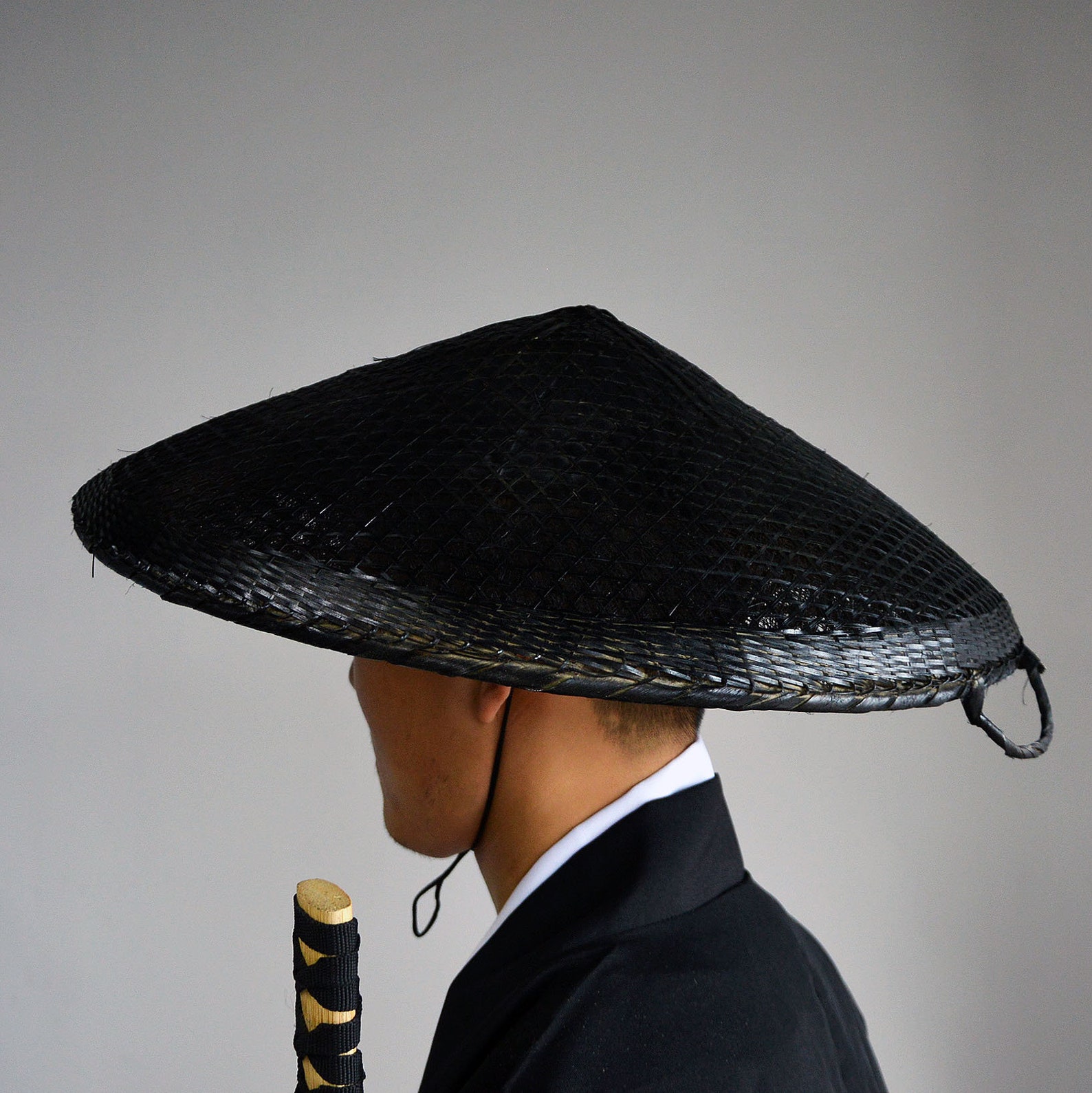
Bamboo Japanese Hat Samurai Hat Cosplay Asian Hat Dia. 19.7 Etsy
An amigasa is a straw hat of the type traditionally worn in some Japanese folk dances. Fukāmigasa (深編み笠): a deep wickerwork kasa. Jingasa (陣笠): a type of kasa commonly worn by samurai and ashigaru (foot soldiers).

apanese SANDOGASA Traditional Samurai Travel Hat aico New Japan F/S Other Japanese Collectibles
What was a samurai's armor made of, and how was it worn? We take a look at the finely forged and beautifully crafted pieces that made up this iconic suit. What is Samurai Armor? Japanese Samura Armor, 18th Century, Met Museum The samurai suit of armor has many different variations and additions.

Japanese Antique Ceremonial Samurai Hat Naga Antiques
Terminology In Japanese, historical warriors are usually referred to as bushi (武士, [bɯ.ɕi]), meaning 'warrior', or buke (武家), meaning 'military family'.

Model Roningasa. Style Japanese SAMURAI. It is a knitting hat worn by a samurai and a ronin
The term samurai was originally used to denote the aristocratic warriors ( bushi ), but it came to apply to all the members of the warrior class that rose to power in the 12th century and dominated the Japanese government until the Meiji Restoration in 1868. Kusakabe Kimbei: Samurai in Armour
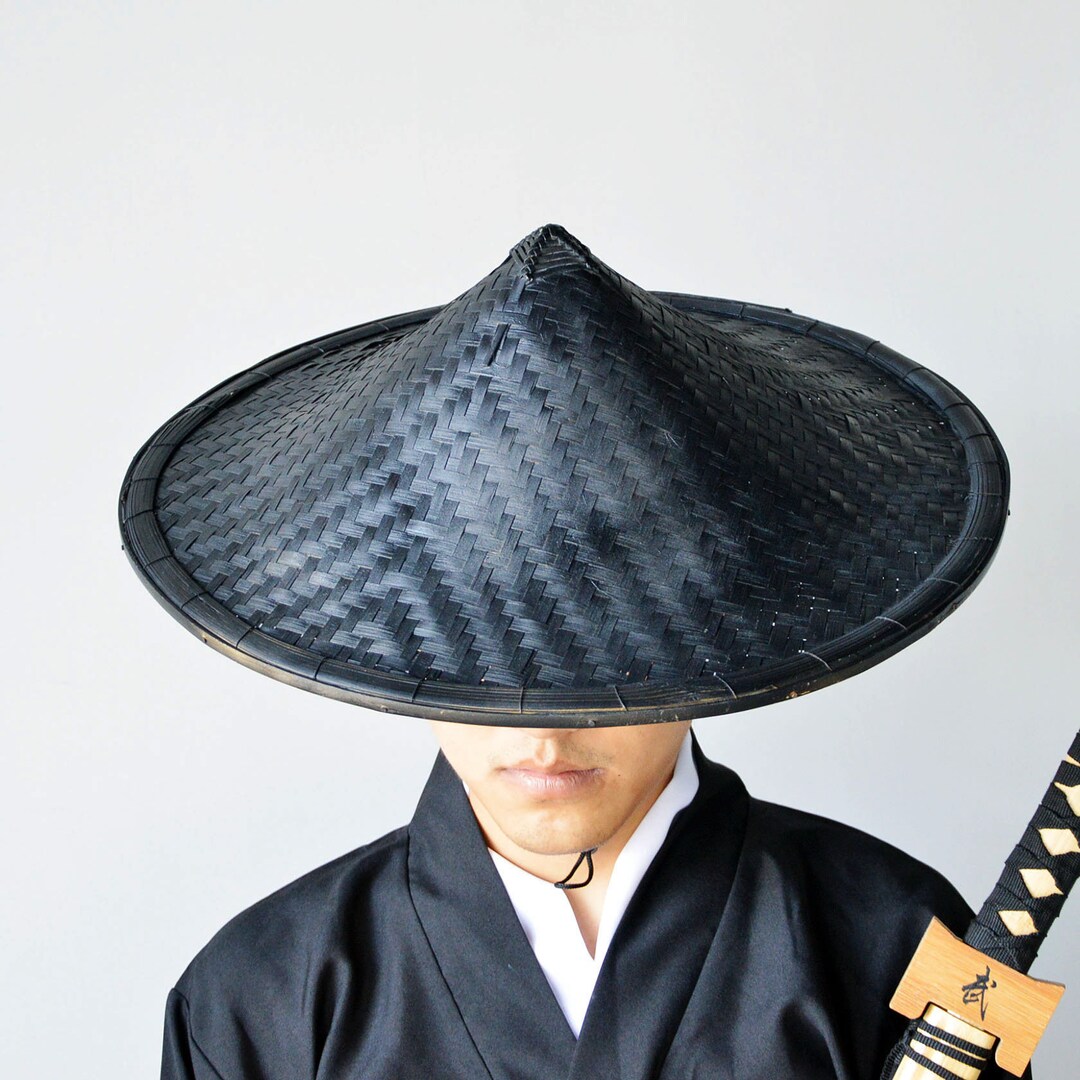
Volcanic Cone Black Bamboo Hat Samurai Hat Cosplay Asian Hat Etsy
The samurai also carried two swords, a long one known as a "katana," and a shorter one called a "wakizashi." These swords were not only weapons but also symbols of the samurai's social status. The samurai were also known for their strict code of conduct, known as "bushido," which translates to "the way of the warrior."

Cone Black Bamboo Japanese Hat Samurai Hat White Characters on Etsy
The samurai were known as bushi in Japan, or buke. The term samurai only began to appear in the first part of the 10th century, originally used to denote the aristocratic warriors. By the end of the 12th century, samurai became almost entirely synonymous with bushi. Bushi is used to denote a "warrior", who may or may not be samurai.

Samurai Ronin Bamboo Hat! This is Japanese traditional Sando hat with head rest. Material Palm
Synonymous with samurai bravery is the katana, or samurai sword, and bushido dictated that this curved, slender blade was the soul of a warrior. Images of samurai depict them with their masterfully crafted weapons of war and together with the shorter blade of a wakizashi , this pair, known as the daisho, represented the social status and personal honour of the samurai.
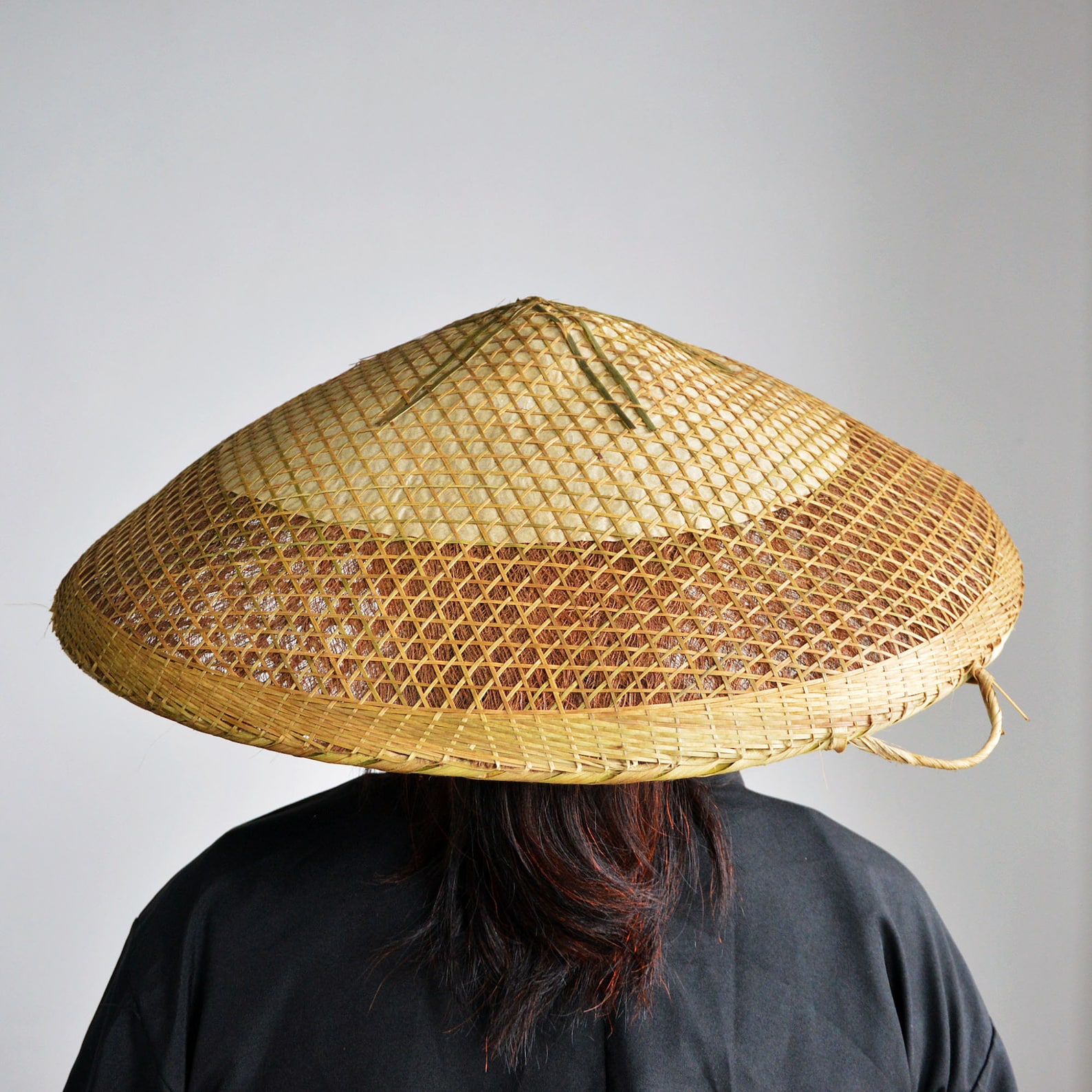
Bamboo Japanese Hat Samurai Hat Cosplay Asian Hat Dia. 19.7 Etsy
The samurai were the legendary armored swordsmen of Japan, known to many Westerners only as a warrior class, depicted in countless martial arts movies. While being a warrior was central to a samurai's life, they were also poets, politicians, fathers and farmers. Samurai played a pivotal role in the last 1,500 years of Japanese history.

The 50 Most Remarkable Hats of All Time Samurai armor, Ancient warriors, Japanese warrior
The Samuraï (侍) were a group of soldiers from the warrior class that ruled Japan during its feudal period for nearly 700 years. They were mercenaries and highly trained combatants who offered their skills and their devotion to the daimyo (Japanese lord).
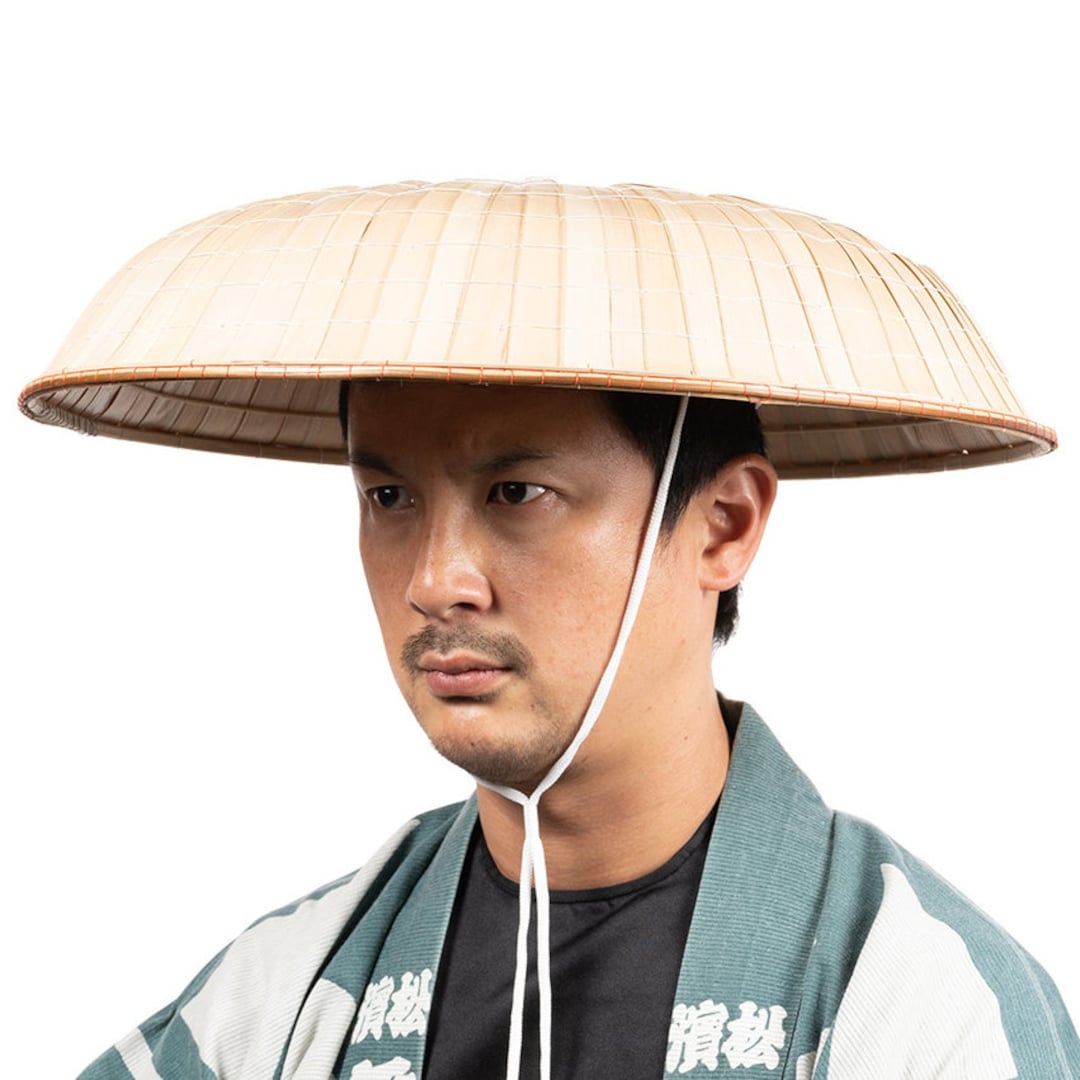
Japanese Hat Samurai Hat Cosplay 47cm Sandogasa Maru Gasa/ Samurai Gasa/ Samurai Cosplay Etsy
A samurai helmet is known as a kabuto. Its essential component is an iron bowl known as a hachi or bachi, which is t he most significant component of the helmet, protecting the samurai's head. A kabuto with a strong and resistant bachi is usually included in an original antique samurai suit of armor. A bachi is then equipped with a neck.
What is a samurai hat called? Quora
Kabuto (兜, 冑) is a type of helmet first used by ancient Japanese warriors which, in later periods, became an important part of the traditional Japanese armour worn by the samurai class and their retainers in feudal Japan .